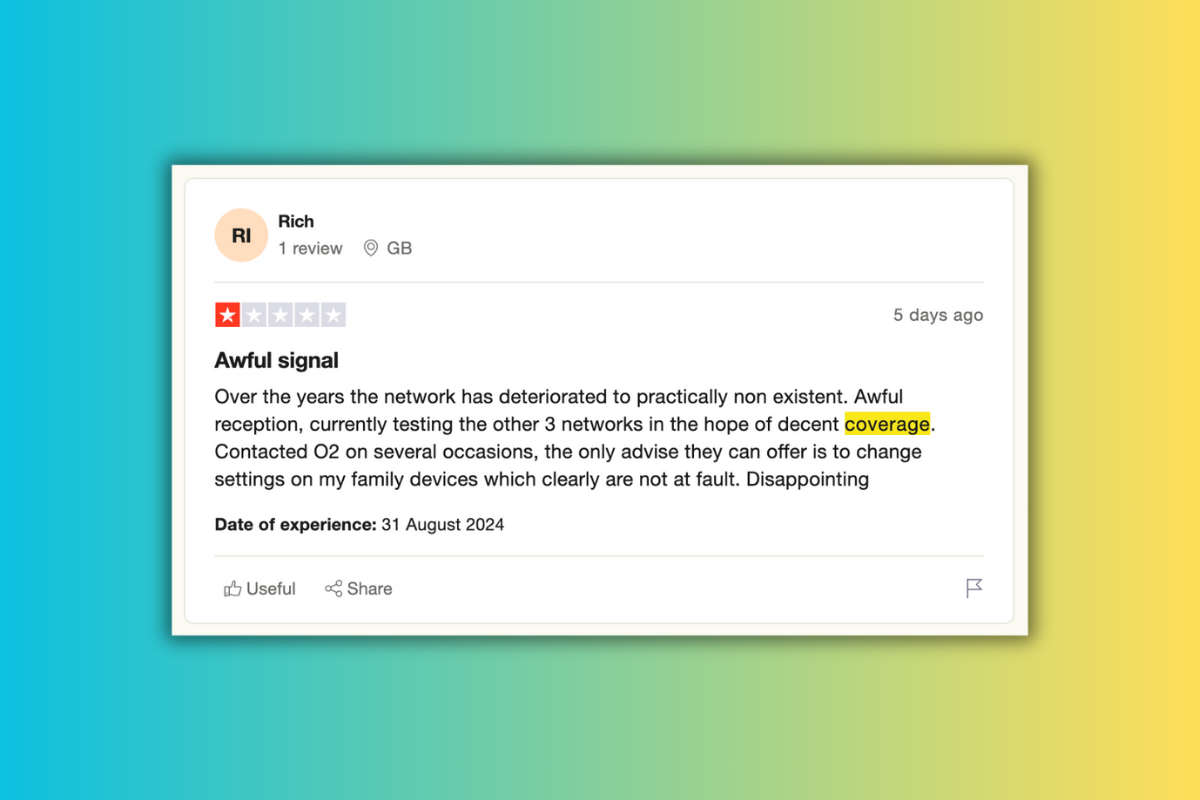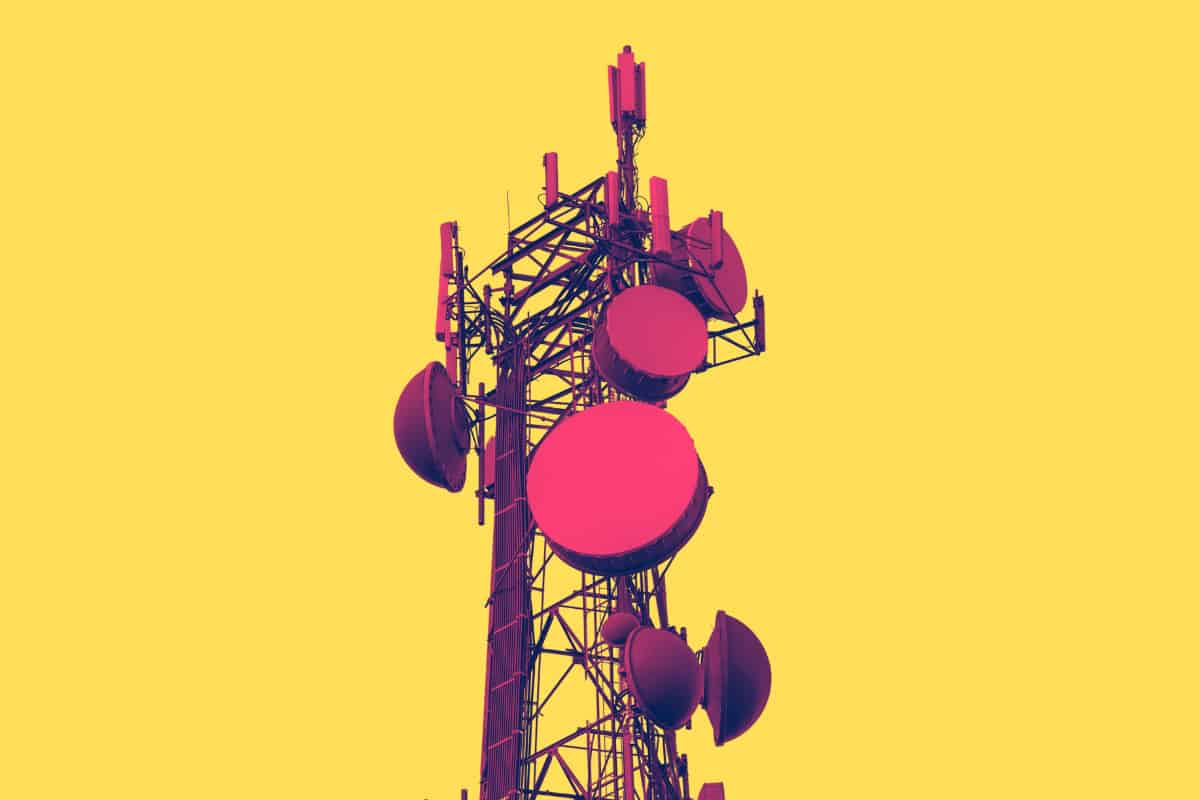HOW DOES THREE COMPARE?
Does Three Have Good UK Coverage? Let’s Put The 99% Claim To The Test…

During lockdown, the craziest thing happened: people started ripping down cellular towers in cities and towns all around the UK.
Why?
The reason is even more bizarre than the behaviour: these people thought that COVID was being spread by 5G.
That’s right, an organic material, a virus, being delivered over the radio waves, straight into your body.
And yet, despite this little set back, 5G is not only here but it is getting faster and faster and more and more people are using it – Ofcom estimates that there are approximately 25 million active 5G connections in the UK (as of 2023).
But how does Three, the new mega-network, thanks to its merger with Vodafone, stack up with respect to overall UK coverage and 5G availability?
Three Claims It Has 99% of The UK Covered & 60% Up And Running On 5G

Is this claim legit? What is it based on? And what does it if, like me, you live in the boonies (a small town in North West England) and even reception for basic things like calling is hard to come by?
We’ll get to that in a moment. But first, here’s the official Three UK coverage stats, direct from the horse’s mouth.
Three’s Coverage Post-Vodafone Merger: A Comprehensive Analysis 📱🇬🇧
Coverage Statistics 📊
🔹 4G: Three reports 99.8% outdoor population coverage.
🔹 5G: The network has expanded to over 650 towns and cities, covering more than 60% of UK outdoors.
🔹 3G: Currently at 98.7% population coverage. Three plans to phase out 3G by end of 2024.
Comparative Performance 🏆
🔹 Three’s combined 3G and 4G coverage reaches 99.8%, comparable to other major networks.
🔹 EE offers slightly higher 4G coverage at 99%, while Vodafone and O2 are in a similar range.
🔹 Three provides 5G at no additional cost on all Pay Monthly and SIM Only plans.
Regional Coverage 🗺️
Three’s coverage varies by region:
🏴 England: 91%
🇯🇪 Northern Ireland: 91%
🏴 Scotland: 82%
🏴 Wales: 85%
Future Commitments 🤝
As part of the Shared Rural Network agreement, Three has committed to:
🔹 Providing good quality data and voice coverage to 88% of UK landmass by June 2024.
🔹 Increasing coverage to 90% by January 2027.
These commitments aim to enhance coverage in rural areas and improve overall service quality.
Analysis 💼
Following the merger with Vodafone, Three has maintained a strong position in the UK mobile market. The company’s 4G coverage is competitive with other major networks, while its 5G rollout shows significant progress. Three’s commitment to rural coverage through the Shared Rural Network agreement indicates a focus on nationwide service improvement. As the 3G network phases out, it will be crucial to monitor how Three reallocates these resources to enhance 4G and 5G services.
99% Coverage Sounds Impressive. But You MUST Take It With A Pinch of Salt…

They’re some impressive looking stats, right? Big numbers. Looks like Three has the UK sorted.
Thing is: stats – especially ones from official corporate marketing departments – are always misleading, they’re never 100% on the money, so to speak.
Take me, for example. I’ve been with Three since 2009.
During this time, I’ve lived in Leeds, Manchester, London, Watford, and now Cheshire. In the cities, my reception was ALWAYS stellar, in fact it was so good I literally never thought about it.
Where I am now, in the sticks of rural Cheshire? It’s not so good. I get 4G, but it’s slow. My town is not yet plugged in for 5G yet, but a couple of small towns nearby are, so I guess progress is being made.
I’ve had 5G on my phone in Crewe, Stoke, and Sandbach (and Kidsgrove, of all places) but never where I live.
And on top of that, I still regularly encounter dead zones, where there is ZERO anything. I know these spots so well now, I can usually avoid them. The only one I can’t avoid is my mum’s house, specifically the kitchen.
My point here is this:
99% coverage sounds impressive, but that claim relates to BASIC phone reception – it doesn’t have to be fast or reliable. Nor does it have to deliver speedy 4G. You could be in a 99% zone and be stuck on 3G for years to come.
A LOT of Three Users Aren’t Happy With Its Coverage Either

And in case you think I’m just being a miserable country bumpkin, here’s a breakdown of the myriad complaints I found perusing TrustPilot when researching this post:
Key issues highlighted across the feedback include:
- Poor Network Coverage: Numerous complaints point to unreliable 4G and 5G coverage, with customers experiencing dropped calls, slow internet speeds, and signal problems, even in urban areas. Many users found Three’s coverage inferior to competitors like EE, Vodafone, or O2, making it difficult to perform basic tasks like streaming or even logging into the provider’s app.
- Inconsistent Internet Performance: Several users of Three’s broadband services reported slow speeds and frequent outages. Many noted that while their mobile data worked better in the same areas, broadband routers underperformed, causing further frustration. Inconsistent access to home broadband left customers without internet for days, often with no compensation or clear resolution.
- Customer Service Problems: Across the reviews, customer service is criticized for being ineffective, unresponsive, and reliant on scripts. Language barriers and the lack of meaningful solutions led to dissatisfaction, with many customers saying it was nearly impossible to resolve issues through Three’s phone or chat services. Some users had to visit physical stores for support.
- Billing and Contract Disputes: Some customers expressed frustration over unexpected charges, such as continued billing after closing accounts or deceptive contract terms. Complaints included overcharges, issues with automatic renewals, and a lack of transparency around billing practices.
- Frequent Maintenance and Network Issues: Several reviews mentioned that Three often carried out maintenance on their network, leading to extended periods without service. These issues were not adequately communicated to customers, who were left without clear updates or adequate compensation.
Things To Keep In Mind – It’s Not All Bad…
Doesn’t look good, does it? All those negative reviews. But here’s the catch: the only people – in the vast majority of cases – that leave reviews on sites like TrustPilot are angry people.
No one that is happy with their product or service, and is perfectly sane, is going to go to their computer, login to TrustPilot, and write a review saying everything is hunky dory.
So, while it might look bad.
Keep this in mind: O2, Vodafone, EE, and even MVNO’s like ID Mobile and Smarty’s reviews are JUST as bad.


The reason? Phone reception, once you get outside of built-up areas or large towns or cities, tends to suck. Always has, and it probably always will to an extent.
I know this because I’m a tech journalist and I’ve bee doing this for a LONG time. But most people don’t; they see the claims of 99% coverage advertised and get cross when it doesn’t translate into real-world usage.
Having said ALL of that, Three has said that it is doubling down on its effects to improve not just its reception in rural areas, but also things like 4G speeds and 5G rollout too.
And it even has a name…
Meet The Shared Rural Network
The Shared Rural Network is a £1 billion initiative co-funded by the UK Government and mobile network operators, including Three, O2, and Vodafone, to enhance 4G coverage in rural areas across the UK.
“Mobile connectivity is absolutely critical for communities around the UK helping to support local economies and keeping people connected with their friends and family. The Shared Rural Network will have a transformative effect on coverage across the UK and it is great to be working with the rest of the industry to achieve this.”
Robert Finnegan, CEO of Three UK
The project aims to improve connectivity for 280,000 homes and businesses, and cover 16,000km of roads, with the goal of achieving 95% reliable 4G coverage by 2024.
This collaborative effort will involve the construction of over 220 new mobile masts, benefiting remote regions across England, Scotland, Wales, and Northern Ireland.
And work is now underway at a range of locations, as you can see below:
- England: 54 new sites, with coverage rising to 90% (from 81%).
- Scotland: 124 new sites, boosting 4G coverage to 74% (up from 42% in 2020).
- Wales: 33 new sites, increasing coverage to 80% (from 58%).
- Northern Ireland: 11 new sites, improving coverage to 85% (from 75%).
Bottom Line?
If you live in a city or a major town in the UK, you should not have any issues with Three’s coverage, 4G speeds or accessing 5G.
That’s the good news.
The bad news is that if you live in more rural parts of the UK, outside major towns and cities, you’re not going to get very good (or reliable) phone reception or mobile data.
And not just with Three, with any network – they all suck once you get out into the sticks.
That’s why Apple and Google started adding Satellite services to their phones – the situation is even worse in the states. And you get bears over there as well!
But things are changing for the better (albeit in a rather slow fashion), as indicated in the data below:
Mobile Data Coverage Stats For Rural UK Areas
Tracking Progress from 2019 to 2024
Coverage Milestones 📊
🔹 2019: 4G coverage reached 91% of UK landmass
🔹 Autumn 2023: 4G coverage increased to 92.7%
🔹 Goal by December 2025: Expand 4G coverage to at least 95% of UK landmass
Shared Rural Network (SRN) Impact 🏗️
Projected coverage by all four major operators (EE, O2, Three, Vodafone) by 2027:
🏴 England: 90% (up from 81% in 2020)
🇯🇪 Northern Ireland: 85% (up from 75%)
🏴 Scotland: 74% (up from 41%)
🏴 Wales: 80% (up from 58%)
Speed Improvements 🚀
🔹 Average Download Speed: 7 Mbps expected in rural areas
🔹 EE’s Contribution: Built over 300 new rural sites, upgraded 1,500+ existing ones
Economic Impact 💼
Improved 4G connectivity could generate economic benefits for rural communities ranging from £249,000 to £6.9 million over 15 years.
Analysis 🔍
The Shared Rural Network initiative has made notable progress in expanding 4G coverage across rural UK areas since 2019. While the program is slightly behind schedule, significant improvements are projected by 2027, particularly in Scotland and Wales. The economic benefits of enhanced connectivity underscore the importance of these infrastructure investments for rural communities. However, continued efforts will be necessary to meet the ambitious coverage goals set for December 2025.
Fingers crossed we see some improvements in 2025…
Wider Reading…
Learn more about what makes Three tick with our expert guides and breakdowns…

Different strokes for DIFFERENT folks
Three Plans Explained: SIMO, PAYG & Bundles
Covers everything from SIM Only deals to Pay As You Go Data Packs…

get more from your plan
Best Three Add-Ons – How To Get More Data For Less!
Find out what the best add-ons are and how to get them